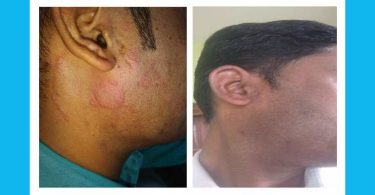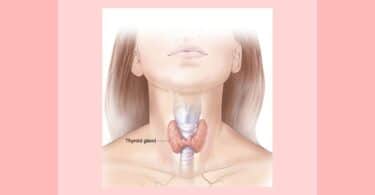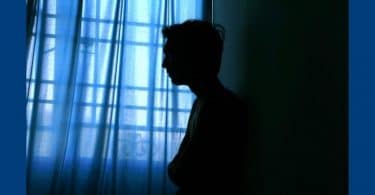In June 2012 a woman aged 70 came to my office with her son. She was lying on a 3 wheel cart. Her son requested that I see his mother outside on the cart. He explained that his mother cannot stand on her leg. I was surprised at first, but his manner compelled me to see his mother. Her leg dragged up from the knee. I asked her for her symptoms and she indicated her left knee, then spoke feebly, saying that her left knee was locked and she cannot straighten her leg. The knee was swollen, sore and sensitive on palpation. Trying to straighten her leg was very painful. On standing, her left leg could not touch the ground. Her walking was greatly affected and she could not move a step.
The knee had fluid collected in it and slight pressure caused much distress. She was fair complexioned and well mannered. Constant teasing pain was there.
Urine was too much offensive. No history of skin or dust allergy. Sweat is excessive with dyspnea.
Family history of rheumatism. Acidity, flatulence. Craving for eggs.
Appetite was normal. Thirst normal. Sleep normal.
The X-ray showed osteoarthritic changes and the gap between femur and tibia was filled with osteophytes which caused the knee to be immovable.
Rx: Calcarea Hypophosphorica 30 followed the next day by Kali.iod 200, twice daily to 6 doses. I asked her to come back after one week. When she returned one week later, her constant pain was completely relieved, but the locking of the leg was the same. Fluid in the knee was unchanged.
She said the leg was still painful and locked but that she felt better. My second prescription was 6 doses of Calcarea Hypo 30 twice daily, followed by placebo. I asked her to come back after one month.
When she returned I was surprised to see that she was moving her leg a little bit.
Soreness and swelling of knee was less. The collection of fluid was remarkably reduced. Her appetite was normal, thirst normal. No weakness was there. She complained of offensive urine, cracking in knee and slight soreness of right knee.
This time I gave her Calcarea hypo 30 one dose, followed in subsequent days by Benzoic Acid 30, four doses twice daily, followed by placebo for one month.
When she returned, movement of the knee had increased and the collection of fluid was reduced. The soreness was much reduced, but she feels soreness when trying to move her leg.
This time I gave her Calcarea hypo 30 one dose with six doses of Ruta. g. 200 twice daily, followed by placebo for one month.
After one month she returned and moved her leg better than before. I gave Calcarea hypo 30 one dose after two doses of Ruta. g 200 followed by placebo for one month.
When she returned after one month I was amazed to see that she was moving her leg the full length. She could walk slowly. The soreness was much reduced and the fluid was gone. She could bend her knee better. She experienced little acidity. Her appetite was less and the weakness was absent. This time I gave her placebo for one month. I asked her to get an x-ray.
After one month she said soreness was reduced again but was still there when she walked. The X-ray plate revealed that the osteophytes were reduced by 50% and a clear gap was seen between femur and tibia. No fluid collection was there. She only felt soreness after walking for a long time, or going up stairs.
I prescribed Ruta g. 200 six doses, twice daily followed by placebo for one month. After one month she felt soreness only after long exertion. I explained to her that the ultimate development had been achieved. No other development was possible at this age. I advised her to do all her household work, but to avoid long walks, much exertion and cold. Now she comes only when soreness increases.
Commentary:
Kali Iod
These are what the stalwarts said about Kali.iod. :
Dr. Alexander L. Blackwood said that Kali.iod has the syphilitic diathesis in the back ground. It causes inflammation of the periosteum.
Dr. John Henry Clarke said about kali.iod – “pain in hips, tearing pain in femur, gnawing pain in hip bones, gnawing in periosteum of left leg, tearing in back part of left heel.”
Dr. Lippe said about Kali.iod : “gnawing in the hip bones, pain in left hip at every step, tearing in left femur, tearing in left knee as if in the periosteum, ulcerative pain in the heels and toes.”
Dr. William Boerick (Boericke Materia Medica) said about Kali.iod – “severe bone pain, periosteum thickened- especially tibia, rheumatism of knee with effusion.”
I saw closely and minutely the symptoms and found that when the periosteum of bone is inflamed, decayed and painful, kali.iod. is indicated.
In 2010 I made a decision:
If:
1. there is pain in bones with the inflammation of periosteum
2. constant tearing and unbearable pain is there
3.decay or degeneration of bone especially tibia has begun
I shall use kali.iod. as a specific and find out the results. In the last two years I tried this drug on 150 patients and in 95% it relieved the bone pain within 48 hours. If an anti-miasmatic medicine has been given, then it works more rapidly, and within 6-7 hours pain is relieved.
In my work with arthritis I often use Kali.iod. in different dose patterns ( depending on patient’s condition) with confidence that the patient will be relieved of pain however severe it is.
Calcarea Hypo
I find that very little has been written about this medicine. Dr.William Boericke has said nothing about it. Dr. John Henry Clarke said about cal.hypo. : “oppression about heart, fullness throughout the thorax. Great dyspnoea, must have air, profuse sweat, complete loss of muscular power with loss of desire to move, tibia ulcerated, emaciation and loss of appetite.”
Dr. Alexander L Blackwood said about cal. Hypo : “ nervous prostration, depression of spirit and lack of nerve force.”
When I began to work with this drug in 2009 I emphasized the following symptoms:
1. Dyspnoea
2. Profuse sweat
3. Oppression at the region of heart
4. Low sprited
5. Nervous debility
All these are general symptoms. I wanted to know if there were individualising symptoms for cal. hypo. I used cal. hypo on the basis of all 5 symptoms for 50 patients suffering from bone diseases. All the patients responded positively.
I used cal. hypo. on the basis of the last 3 symptoms, on another 20 patients. Only 2 were with positive response, but very slow development. For another 30 patients I administered cal. hypo. on the basis of dyspnoea and profuse sweat. I got excellent results as all 30 patients responded quickly and rapidly.
I repeated this process several times and the result was same. From these applications I concluded that dyspnoea (not that of bronchitis) and profuse sweating can be considered as individualising symptoms for cal. hypo in cases of arthritis.
There was one thing I was doing at the same time. I used this medicine in other disease conditions like gastritis, bronchitis, menstrual difficulties. I found Calc hypo. has very little effect on these spheres. The skeletal system is the first place where this medicine acts more dominantly. I have used this medicine in hundreds of cases of arthritis for the last 5 years. In every case it is effective. It repairs and dissolves the osteophytes more rapidly than any other medicines. During the clinical application I found that these two medicines follow each other well. That is why I applied the two medicines in this case.





may i have contact details of Dr. Santanu Maity
respected Bhuvaneswari
you have mentioned nothing about you. Are you homeopath. I shall be glad to discuss anything about homeopathy.
respected Bhuvaneswari
you have mentioned nothing about you. Are you homeopath. I shall be glad to discuss anything about homeopathy. My e-mail [email protected]
Sir,
A very GOOD presentation about Cal.Hypo.& use of Kali iod .
Thanks.
I wish to have e-mail id(Plz,) of U.I wish to have Ur view on Epi Retinal Membrane
B B Gupta
dr.
Your contribution towards arthirities is amazing.
Sir,
I am waiting for your reply about my first post. Plz, email ur email Id.
With Regard.
B B Gupta. ([email protected])
very good.
Excellent presentation. You are a true Homeopath and a true Master. Thank you.
respected sir.
thank you for your complement.
The individualization that you have applied is worth commendable. I too verified Calc Hypo 30 on arthritic patients with dyspnea and could reproduce your results. Hoping to help more arthritic patients in the coming days. God bless you for sharing these wonderful remedies.
Maruti Shanbhag
respected Dr.shanbhag
I am very pleased to hear that you have tried my findings and find it true. Thank you for trying it.
Homeopathy is reliable and this is again proved for you like doctors.thank you.